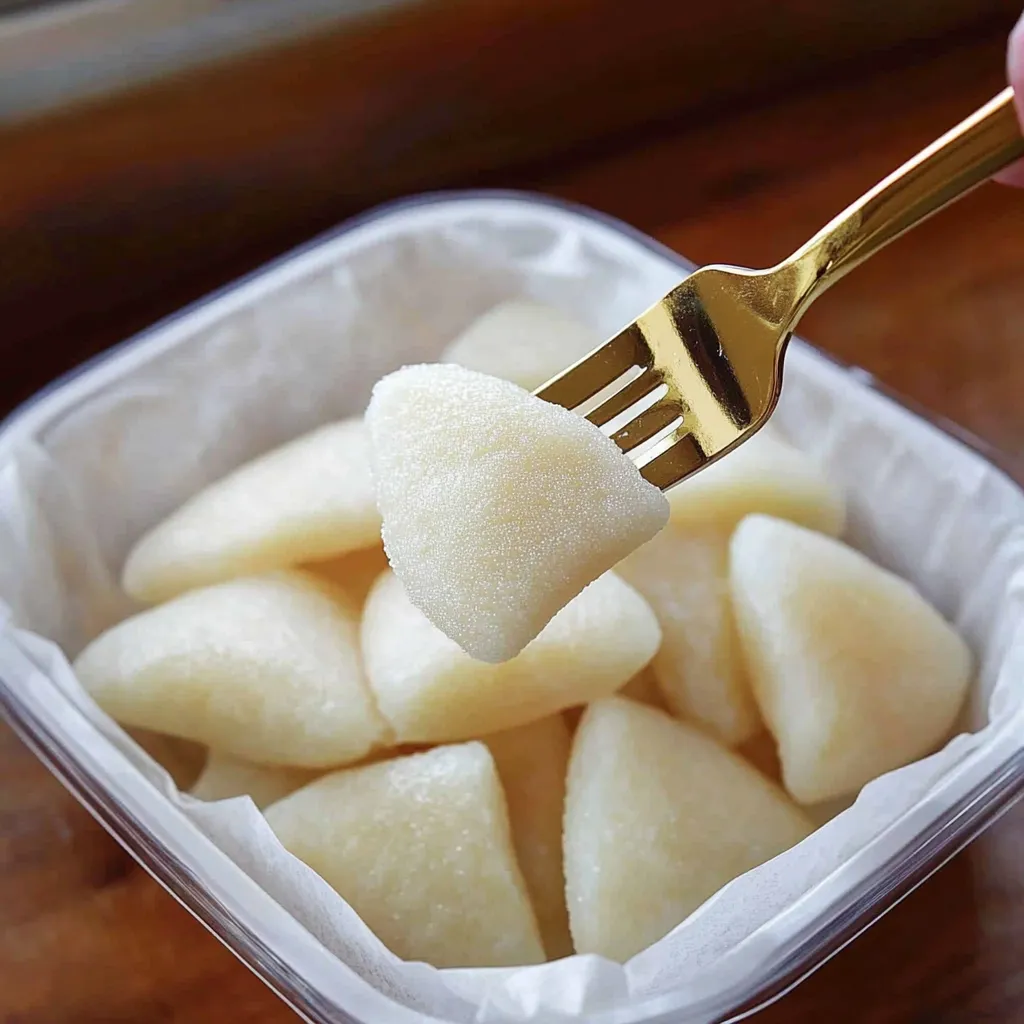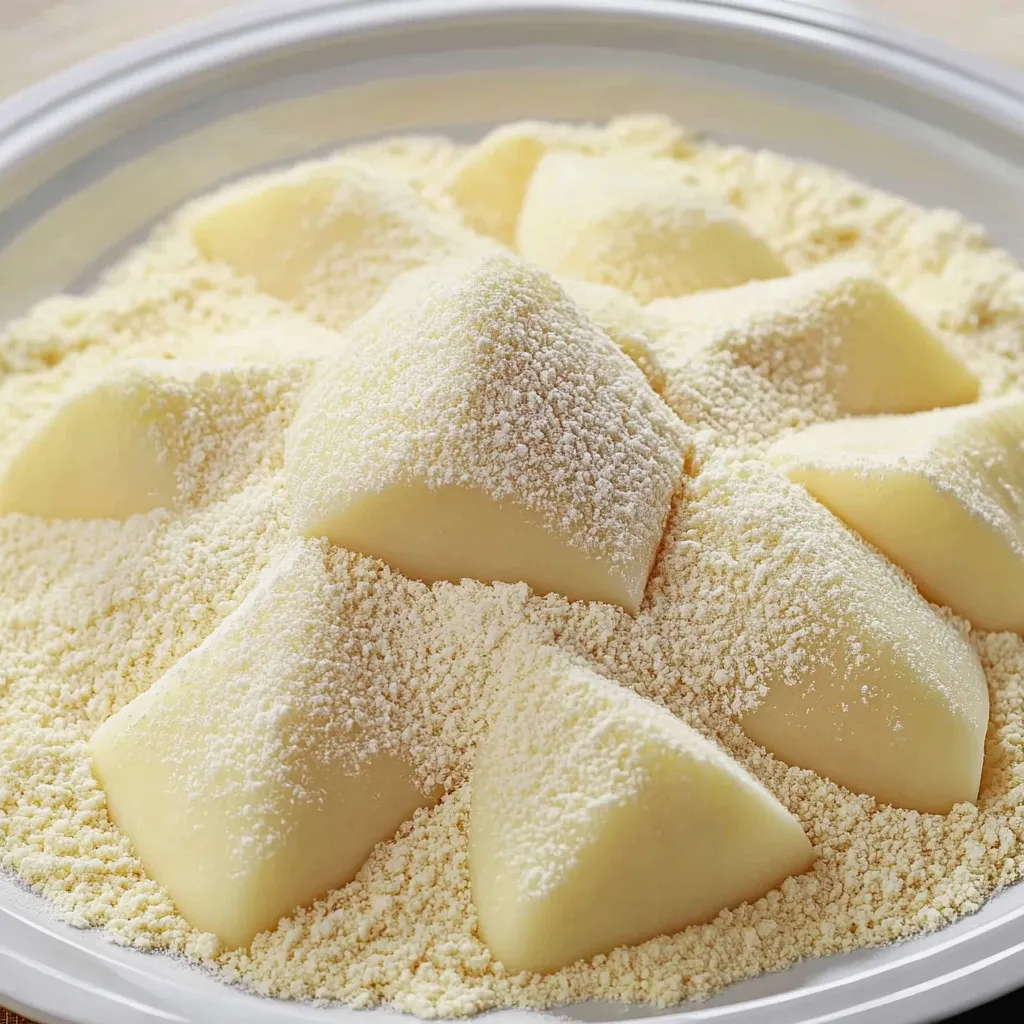 Pin it
Pin it
Milk mochi is one of those comfort desserts you can pull together in minutes when you crave something chewy and sweet. It brings back memories of rainy days at home, everyone crowded around the kitchen table, sneaking pieces while they are still warm and pillowy.
I remember discovering this recipe when I was out of eggs and butter but still wanted to make something special. Now it is my go to whenever I need an effortless treat that makes everyone happy.
Ingredients
- Glutinous rice flour: essential for that stretchy mochi texture look for a fresh bag for best chewiness
- Cornstarch: helps keep the dough soft and smooth always check for lumps and choose a fine variety
- Sugar: gently sweetens the mochi and helps with browning use white granulated for a clean taste
- Corn oil: provides moisture and helps keep the mochi tender pick one with a mild flavor
- Whole milk: enriches the dough giving that soft milky flavor use fresh whole milk for best results
Step-by-Step Instructions
- Mix the Ingredients:
- In a large bowl whisk together the glutinous rice flour cornstarch sugar corn oil and milk until there are no dry spots or lumps. Take time to really mix so the dough is silky.
- Strain Optional:
- Pour the mixture through a fine mesh strainer. This step helps achieve a silky smooth batter especially if your flour is a bit clumpy.
- Cook the Mixture:
- Transfer the mixture to a nonstick pan and set over low heat. Stir constantly with a spatula scraping the sides and bottom. Be patient the dough will slowly thicken. Once the mixture comes together in a shiny cohesive mass and pulls away from the pan it is ready. Make sure there are no raw flour streaks.
- Cool and Knead:
- Carefully scoop the dough onto a plate and allow it to cool until it is just warm to the touch. Put on food safe gloves then knead the dough for about five minutes. Stretch and fold until it becomes glossy and elastic—this is key for the signature mochi chew.
- Shape and Cut:
- Dust your work surface with cooked glutinous rice flour if you have it to keep things from sticking. Roll the dough into a long rope and slice into triangles or any fun shape you love.
- Coat with Soybean Flour:
- Toss each piece in roasted soybean flour for a nutty toasty finish that keeps them from sticking together.
 Pin it
Pin it
Working the dough by hand is my favorite part. The texture is just so smooth and stretchy I always find myself sneaking a warm bite before anyone else can get to it. My little cousin still laughs about the time we cut the mochi into animal shapes for her birthday.
Storage Tips
Milk mochi tastes best the same day but if you have leftovers store them in an airtight container at room temperature for one day. For longer storage refrigerate in a covered container for up to three days but expect the texture to firm up a bit. You can microwave leftover pieces wrapped in a damp paper towel for a few seconds to revive that soft chew.
Ingredient Substitutions
If you are out of corn oil feel free to use any neutral oil such as sunflower or canola. For a dairy free version swap in oat or almond milk though the flavor may change subtly. Roasted soybean flour is classic but unsweetened coconut flakes or a dusting of powdered sugar can also add flavor and prevent sticking.
Serving Suggestions
Enjoy milk mochi on its own or serve with a drizzle of sweetened condensed milk for extra richness. For a pop of flavor try dusting with matcha powder or dipping in melted chocolate. I sometimes serve it with fresh berries for a bright contrast.
Cultural Context
Mochi is a beloved treat across East Asia but this milk mochi takes a shortcut on the traditional method making it accessible for busy home cooks. The chewy milk dough pays homage to the textures found in Japanese and Chinese dessert shops but you can personalize it however you like.
Frequently Asked Questions
- → What makes milk mochi so soft and chewy?
Glutinous rice flour is key for the signature texture, providing the soft, elastic chew you expect from mochi.
- → Can I use non-dairy milk for this dessert?
Yes, any unsweetened non-dairy milk can work in place of whole milk, though the flavor and texture may vary slightly.
- → How do I prevent the dough from sticking?
Sprinkle cooked glutinous rice flour on your surface and hands when kneading or shaping to keep everything manageable.
- → Is it necessary to strain the mixture before cooking?
Straining ensures a smoother texture, but it's optional if you prefer a more rustic feel or have already mixed well.
- → How should leftover mochi be stored?
Keep any leftovers in an airtight container at room temperature for up to a day, as refrigeration can alter the texture.
